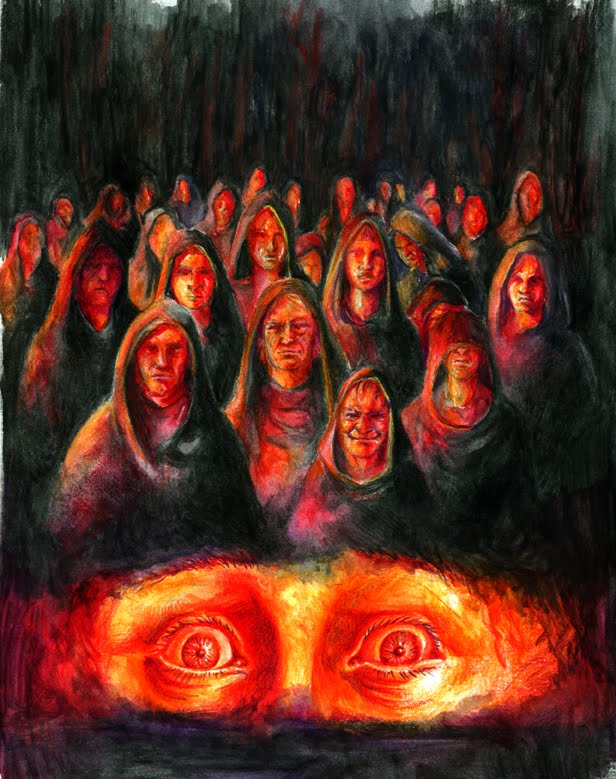Amber Hatley
Option 5
Young Goodman Brown
Young
Goodman Brown tells the story of a religious man who leaves his wife at home
one day, encounters a man who turns out to be the devil, and later takes part
in a witch ceremony. Every pious towns person he knows, including his wife,
Faith, is present, causing him to doubt everything he thought he knew about his
life. I actually enjoyed this story once I became accustomed to the language
style used by Nathaniel Hawthorne, giving it a rating of 4. I might recommend
it to a friend because there was a sense of mystery throughout, causing me to
question whether Goodman Brown’s devilish encounter was real or simply a dream.
I believe others would enjoy reading this story because it creates an
interactive atmosphere with the audience. I kept thinking of physical aspects
that would prove Brown’s belief that is was real, such as Faith’s pink ribbon,
but I’m still not quite sure. He could have easily also fallen into a deep
sleep after heading into the woods, meaning that his subconscious created this
vivid illustration of everything Goodman Brown is against. This would suggest
the incident showed Brown’s fears or possibly what he knew all along about the
people around him.
The
ambiguity of the story is what really caught my attention while reading. Although Hawthorne sets up these direct
contrasts, such as good vs. evil, he also overlaps them in a “gray” area. I
thought it was interesting that the author used such normally “black and white”
distinctions to illustrate that not everything is black and white. When Brown
discovers that Goody Cloyse is a witch who calls the Devil by name, he is
awestruck, saying "that old woman taught me my catechism" (Hawthorne 56). Since she is a well respected, religious woman in the community who
actually taught Brown the Bible as a child, this creates a level of ambivalence
in the story. Brown and the reader begin to understand that not everyone is as good as they seem. This gothic trope of ambiguity is further shown when the
Devil says “Evil is the nature of mankind. Evil must be your only happiness” (Hawthorne 59).
The Devil continues telling Brown of the evils of the world as women killed
their husbands and infants with him as their only witness. This brings about the
idea that no one is all good or all evil, including Goodman Brown himself.
I
think the most important part of the story is that Goodman Brown was quick to
judge his own wife and community after his seemingly real encounter. When the family knelt for prayer, "he scowled and muttered to himself, and gazed sternly at his wife, and turned away" (Hawthorne 63). This aspect is what
made me enjoy the story and want to recommend it to others. When Goodman Brown
returns, he treats Faith, Goody Cloyse, and the rest of the community coldly,
implying that he too isn’t as “good” as his name implies. I thought it was very
clever of Hawthorne to also show ambiguity in his name. If Goodman Brown was truly good, he wouldn't have been so quick to judge others by a supernatural incident. Overall I found the
story very intriguing, causing me to question whether anyone in the story or in
my life, for that matter, was truly all good or all evil. I rated this story as
a 4 because it was entertaining, yet also held the moral that not everyone is
what they appear to be.Hawthorne, Nathaniel. "Young Goodman Brown." American Gothic Tales. Ed. Joyce Carol Oates. New York: Plume, 1996. 52-64. Print.


No comments:
Post a Comment